Posture Support
Updated:
(Also known as Posture Brace, Posture Support Brace, Posture Back Brace, Posture Back Support, Corrective Posture Brace, Postural Support, Postural Brace)
What is a posture support?
A posture support is a brace which is designed to improve posture and therefore reduce stress on the joints and muscles of the upper back and neck during activity. It achieves this roll by restricting bending and slouching of the spine and limits shoulders forward movements. It provides gentle, but firm support, pulling the shoulders back during general activity, resulting in a taller, straighter spine.
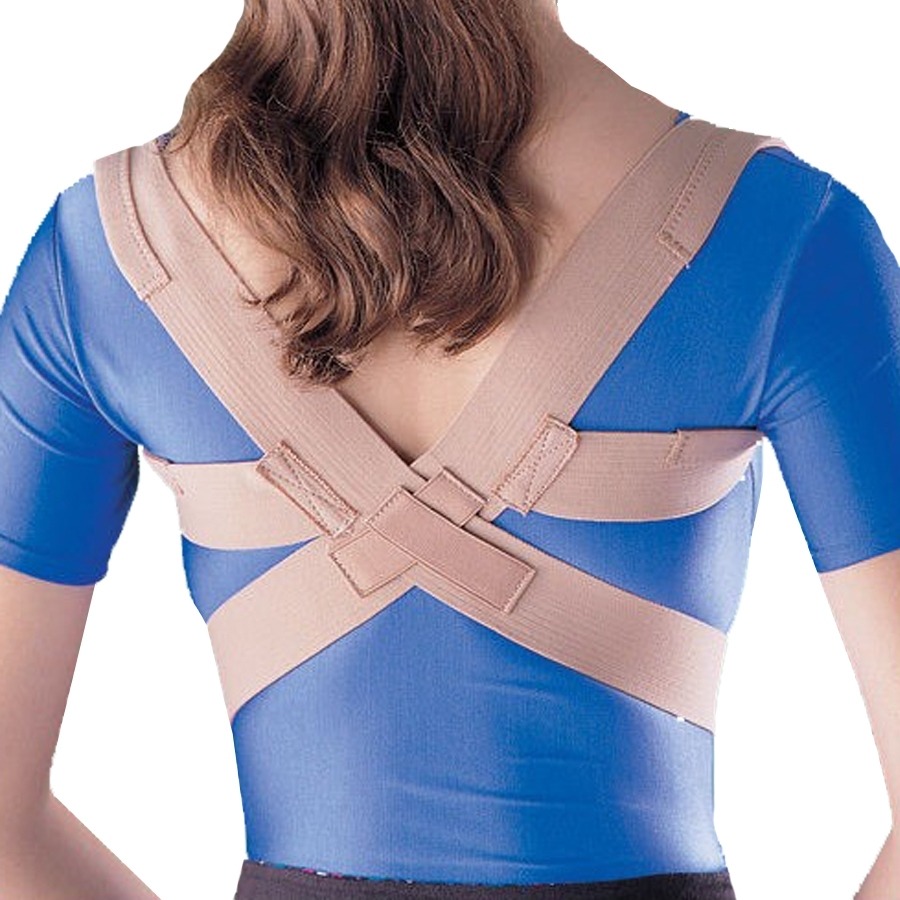
When should I use a posture support?
Posture supports are generally beneficial for people who have poor posture (figure 1) or suffer from headaches, back, neck or shoulder pain that is aggravated by poor posture (e.g. slouching).
For those patients with poor posture (figure 1), a posture support can help to improve posture by firmly pulling the shoulders back resulting in a taller, straighter spine (figure 2). This is important to prevent gradual ‘hunching’ or ’rounding’ of the shoulders and upper back over time due to poor postural habits or fatigue.
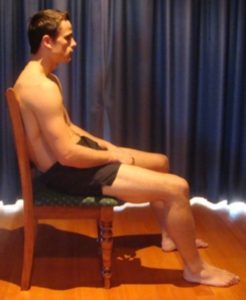

For patients who suffer from injuries that are aggravated by poor posture, a posture support may help to reduce stress on the spine and therefore injury aggravation. It may be particularly beneficial for those patients who are in the acute phase of their upper back or neck condition or who suffer from chronic, posture related, headaches, upper back, neck or shoulder pain (e.g. from sitting at a computer, driving, reading, or working with the arms in front of the body). A posture support can assist in accelerating healing and recovery from these conditions by reducing the amount of aggravation during every day activities due to poor posture.
As a general rule, patients with headaches, upper back, neck or shoulder pain should avoid aggravating activities and poor postural positions that place increased stress on the spine. However, if unavoidable, a postural brace can help to improve posture, reduce stress on the spine and reduce injury aggravation caused by these activities. In these instances, a posture brace should be used during aggravating activities or during those activities that are likely to aggravate the condition or place the spine in poor posture (e.g. driving, use of a computer, vacuuming, sweeping, cooking etc.).
It is important to note, however, that it is generally not advisable to constantly use a posture support as the body can become dependent on it. This typically occurs gradually over time, with excessive use, and may be due to a loss of spinal strength resulting from reduced muscular activation during brace use (since the brace already provides support). Weaning off the posture support is generally recommended as postural habits, strength, range of movement and symptoms improve.
When should I avoid using a posture support?
Posture supports generally should not be used if they are uncomfortable or result in an increase in symptoms. However, it is important to note that this may occur in the initial phase of an upper back or neck injury when the spine is particularly ‘sensitive’ to minor movements and light touch. In these instances, the posture support may still be beneficial for the condition although it should only be used once the initial sensitivity subsides and the posture support is comfortable to wear.
If you are performing an activity that does not aggravate your condition or result in an increase in symptoms and you are able to actively maintain good posture without the brace, then there is generally no reason to continue wearing the posture support.
What conditions may benefit from the use of a posture support?
The following conditions may benefit from the use of a posture brace:
- Poor Posture
- Cervical Postural Syndrome
- Thoracic Postural Syndrome
- Whiplash
- Headaches (originating from the neck)
- Wry Neck
- Cervical Disc Bulge
- Thoracic Disc Bulge
- Cervical Facet Joint Sprain
- Thoracic Facet Joint Sprain
- Cervical Spinal Degeneration
- Thoracic Spinal Degeneration
- Osteoarthritis of the Neck
- Osteoarthritis of the Upper Back
- Upper Back or Neck Sprain
- Upper Back or Neck Strain
- Muscular Strains of the Upper Back or Neck
PhysioAdvisor’s Posture Braces
PhysioAdvisor’s posture braces have been carefully selected by experienced physiotherapists to ensure excellent quality and maximal benefit for patients.
Oppo Posture Support
This light-weight posture support is designed to improve posture and reduce stress on the upper back and neck.
It is particularly useful for patients who have poor posture or ’rounded shoulders’, or for patients who experience upper back or neck pain during positions of poor posture (e.g. sitting at a computer, driving, performing household duties such as cooking, ironing, vacuuming etc.).
This posture support is easily applied by inserting each arm into the circular loop at the end of each of the 2 straps. Having anchored the straps around both shoulder joints, cross the straps at the mid back and close at the front of your body. This results in a gentle but firm support, pulling the shoulders back and a subsequent taller, straighter spine.
The support is made of a unique elastic material that has been brushed on one side to create an almost ‘cotton-wool’ finish. Consequently, it can be applied directly over bare skin with comfort and is almost invisible under your clothes. This product improves posture, allows unrestricted movement, delivers all day comfort and is totally washable and hygienic.
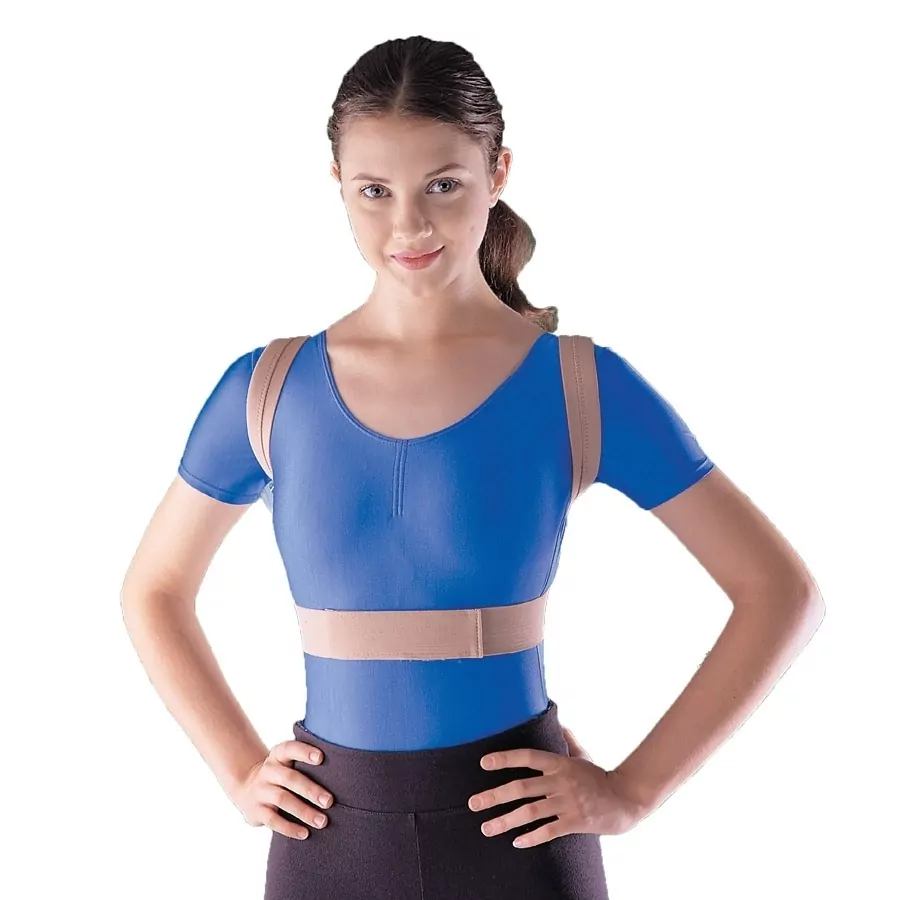
Sizing
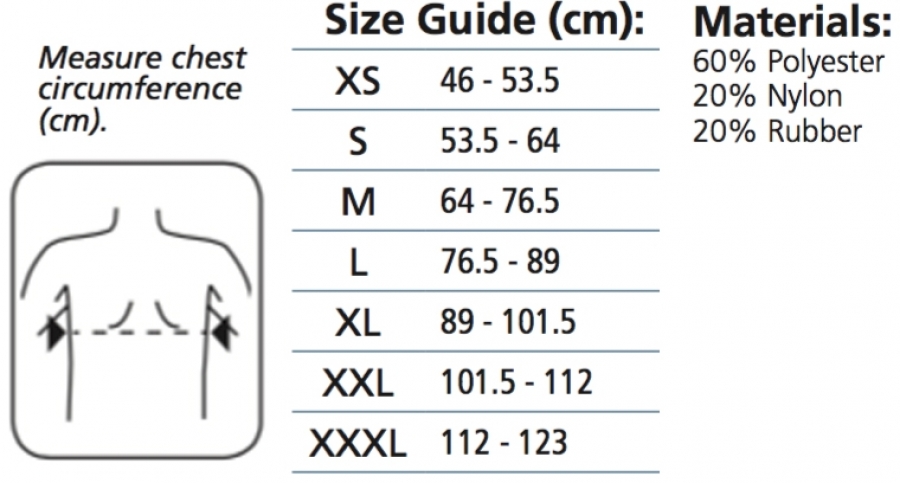
How do I purchase a PhysioAdvisor posture support?
To purchase a PhysioAdvisor posture support simply click on the link below or visit the PhysioAdvisor Shop.
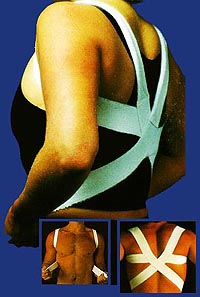 Purchase a Posture Support
Purchase a Posture Support
Return to top of Posture Support / Posture Brace.

Link to this Page
If you would like to link to this article on your website, simply copy the code below and add it to your page:
<a href="https://physioadvisor.com.au/shop/product-information/posture-support”>Posture Support – PhysioAdvisor.com</a><br/>
Return to the top of Posture Support.
